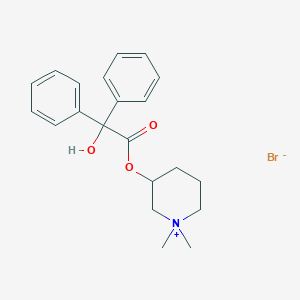Adjunct in peptic ulcer
Adult: 25-50 mg 4 times daily, titrated to the lowest effective dose and adjust accordingly to patient’s response.
|
Indications and Dosage
Oral
Adjunct in peptic ulcer Adult: 25-50 mg 4 times daily, titrated to the lowest effective dose and adjust accordingly to patient’s response.
|
|
Administration
Should be taken with food.
|
|
Contraindications
Hypersentivity. Glaucoma, obstructive uropathy and GI disease, paralytic ileus, myasthenia gravis, unstable CV status in acute GI haemorrhage, intestinal atony, toxic megacolon complicating ulcerative colitis.
|
|
Special Precautions
Patient w/ autonomic neuropathy, ulcerative colitis, CV disease (e.g. coronary heart disease, CHF, cardiac arrhythmias, tachycardia, HTN), prostatic hypertrophy, hyperthyroidism. Renal and hepatic environment. Elderly, debilitated patients. Pregnancy and lactation.
|
|
Adverse Reactions
Significant: Drowsiness, blurred vision, diarrhoea, heat prostration, psyschosis.
Nervous: Dizziness, headache, nervousness, confusion, insomnia, weakness. CV: Tachycardia, palpitations. GI: Vomiting, nausea, constipation, ageusia, bloating, xerostomia. Endocrine: Decreased lactation. Genitourinary: Urinary retention, urinary hesitancy, impotence. Ophthalmologic: Increased ocular tension, cycloplegia, mydriasis. Dermatologic: Urticaria, hypohidrosis. Potentially Fatal: Anaphylaxis. |
|
Patient Counseling Information
This drug may cause drowsiness and blurred vision, if affected, do not drive or operate machinery.
|
|
Overdosage
Symptoms: Curare-like effects (e.g. neuromuscular blockade leading to weakness and possible paralysis), headache, nausea, vomiting, blurred vision, mydriasis, hot and dry skin, xerostomia, difficulty in swallowing, dizziness, CNS stimulation. Management: Employ gastric lavage, admin of emetics and activated charcoal. May use sedatives (e.g. short-acting barbiturates, benzodiazepines) for overt signs of excitement. If indicated, may also use parenteral cholinergic agent as antidote.
|
|
Drug Interactions
May increase adverse effects of other anticholinergic drugs (e.g. amantadine, class I antiarrhythmic agents, antihistamines, antipsychotic agents, benzodiazepines, MAOIs, narcotic analgesics, nitrates and nitrites, sympathomimetic agents, TCA). May antagonise effects of antiglaucoma agents and drugs which alter GI motility (e.g. metoclopramide). Increased serum digoxin concentration and toxicity.
|
|
Action
Description: Mepenzolate bromide is an antimuscarinic agent and a post-ganglionic parasympathetic inhibitor. It decreases gastric acid and pepsin secretion and suppresses colon contraction.
Pharmacokinetics: Absorption: Incompletely absorbed from the GI tract. Excretion: Via urine (3-22%) and faeces. |
|
Chemical Structure
 Source: National Center for Biotechnology Information. PubChem Database. Mepenzolate bromide, CID=6461, https://pubchem.ncbi.nlm.nih.gov/compound/Mepenzolate-bromide (accessed on Jan. 22, 2020) |
|
Storage
Store below 30°C. Protect from heat.
|
|
MIMS Class
|
|
ATC Classification
A03AB12 - mepenzolate ; Belongs to the class of synthetic anticholinergics, quaternary ammonium compounds. Used in the treatment of functional bowel disorders.
|
|
References
Anon. Mepenzolate. Lexicomp Online. Hudson, Ohio. Wolters Kluwer Clinical Drug Information, Inc. https://online.lexi.com. Accessed 19/07/2017. Buckingham R (ed). Mepenzolate Bromide. Martindale: The Complete Drug Reference [online]. London. Pharmaceutical Press. https://www.medicinescomplete.com. Accessed 19/07/2017. Cantil Tablet (Sanofi-Aventis U.S LLC). DailyMed. Source: U.S. National Library of Medicine. https://dailymed.nlm.nih.gov/dailymed/. Accessed 19/07/2017. McEvoy GK, Snow EK, Miller J et al (eds). Mepenzolate Bromide. AHFS Drug Information (AHFS DI) [online]. American Society of Health-System Pharmacists (ASHP). https://www.medicinescomplete.com. Accessed 19/07/2017.
|